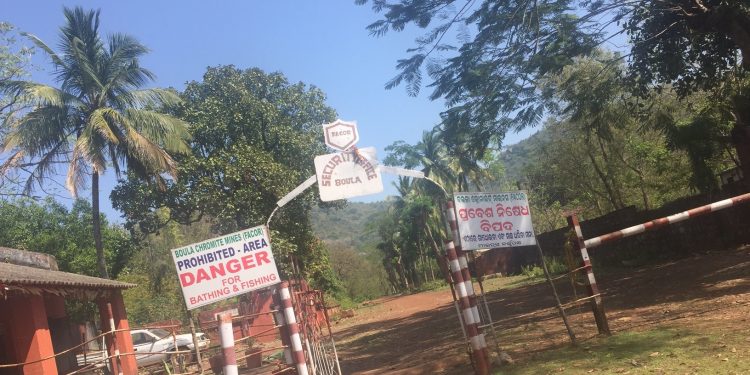Besides having huge deposits of iron ores, manganese and chromites, Keonjhar district has the potential of transforming the mining sector of the state as it possesses precious platinum reserves.
Although almost a decade has lapsed since the Geological Survey of India (GSI) discovered platinum reserves in Baula-Nuasahi mining belt, commercial exploration of platinum still remains a far cry.
The Baula-Nuasahi mining belt under Hatadihi block of Keonjhar district, which has deposits of platinum group of elements (PGE), is situated at around 170 km north-northeast from Bhubaneswar. According to GSI sources, PGE mineralisation, associated with chromites, is in Baula-Nuasahi ultramafic complex.
A field visit by Orissa POST revealed that the Baula mines near Facor in Bangur area from where the platinum was explored has been marked as a prohibited area. Now, the mining pit located just at the foot of the Baula hills has accumulated water resembling a lake.
According to locals, the platinum reserve was discovered during chromites exploration in the region.
Speaking on condition of anonymity, a local inhabitant said that exploration of chromites has been stopped as soon as the platinum reserves were traced. “Local unskilled and semi-skilled workers may get employment opportunities if the mining operations resume in near future,” he added.
Echoing similar sentiments, another local said the resumption of mineral exploration will open up indirect employment opportunities and boost local business too. “Local youths can find gainful employment by opening spare part stores for automobiles, garages, hotels and restaurants and other shops,” he added.
“The Baula-Nuasahi ultramafic complex is the only proven PGE deposit in the country with an estimated reserve of 14.2 million tonnes. This is confined to the active chromite mines,” GSI sources said.
The GSI also found the presence of PGE at Sitampundi in Tamil Nadu. Efforts are also on to intensify survey of heavy metals along the Odisha coast, said sources.
The GSI entered into collaboration with the OMC in 2010. After a year-long study, scientists are elated about the prospects of mining this mineral in the region.
The Indian Bureau of Mines (IBM) Year Book 2012 states that the GSI carried out exploration in various areas in the states of Andhra Pradesh, Karnataka, Kerala, Manipur, Maharashtra, Odisha (jointly with Odisha Mining Corporation Ltd) and Tamil Nadu.
Platinum has multifarious use
The primary usage of PGE is in chemotherapy (for treatment of cancer). It has the ability to prevent division of certain living cells, a remarkable characteristic which finds profound application in treatment of cancer.
The book reveals that nearly half of the total platinum used worldwide is in the form of a catalyst in catalytic converters in automobiles. Catalysts for automobile sector use platinum and palladium. Automobiles that run on diesel predominantly use platinum for catalytic conversion. The chemical inertness and refractory properties of platinum and palladium are conducive for their applications in electrical, electronics, dental, medical fields and glass industry. These metals are also used as catalyst in various chemical processes, such as in organic synthesis in hydrogenation, dehydrogenation and isomerisation, production of nitric acid as also in the manufacture of fertilizers, explosives & polymers and fabrication of laboratory equipment.
Besides, platinum-iridium alloys are extensively used in prosthetics and biomedical devices. Platinum’s excellent conductivity lends itself to use in the electrodes of phosphoric acid fuel cells for generating electricity. Another significant use of platinum and its alloys, in cast or wrought form is in jewellery. Platinum-iridium alloys find major application in making crucibles for growing crystals. Glass made with platinum and rhodium is used in housing construction, flat screen televisions, computer monitors, display panels, automobile displays, factory monitoring equipment, among others.
Ratan Kumar Pradhan, OP






































